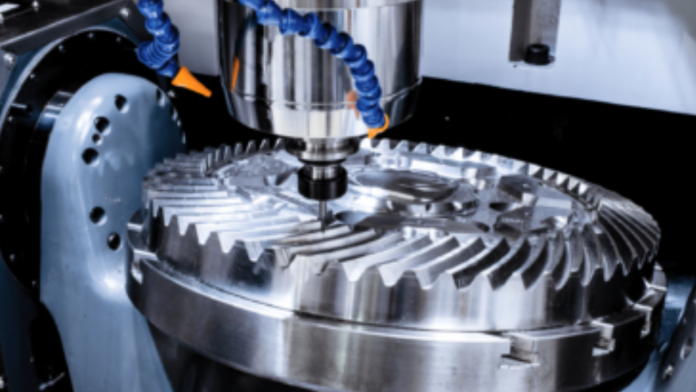G code is a type of programming language used to instruct machine tool movement in the fields of 3D printing and Computer Numerical Control (CNC). The automation instructions for different machine functions and tools are written in Computer Aided Manufacturing (CAM) software. Geometric code is known as G-code. Another name for G-codes is CNC machine preparatory codes.
The machine tool follows the directions given by G-codes to move in the (X, Y, Z) Cartesian coordinate system. The G-code offers numerous other input options in addition to location instructions, including feed rate, wait time, start point, stop point, tool length offset, speed and angle in the rotational axis, and more.
What Role Does G-Code Play?
When it comes to programming languages for numerical control, G-code is essential. Computer intelligence is not a feature of machines by nature. They have servomotors inside of them that allow different parts to move. Nonetheless, incorporating microprocessor units into the machines can aid in regulating the motors’ degree of movement. It can also force various machine components to cooperate to complete the necessary task. However, there is no direct line of communication between the operators and the machine. The machine and the operator communicate with each other using G-codes.
Safety Considerations or Precautions
CNC machines are controlled by G-code, and erroneous or badly written G-code can present significant safety risks. Here are a few crucial things to remember:
Recognize the Equipment and Substances:
Know the features, capabilities, and limits of the CNC machine inside and out before writing any G-code. Errors or accidents can result from not paying attention to the subtle differences in the functionalities of different machines. Take into account the material being machined, as different materials call for different toolpaths, feeds, and cutting speeds. Neglecting to consider the properties of the material could lead to subpar machining results or tool breakage.
Confirmation and Modeling:
Prioritize visualizing and validating the G-code program using simulation tools before running it on the real machine. Potential collisions, mistakes, or unexpected toolpaths that could jeopardize safety can be found via simulation. To guarantee that simulation software appropriately depicts the machine’s present configuration and capabilities, update and maintain it regularly.
Emergency Stopping and Taking Off:
Incorporate emergency stop (E-stop) protocols into the G-code program to enable prompt cessation of machine operations in the event of unforeseen problems. This reduces the possibility of accidents and guarantees a quick response to any emergencies. When utilizing override functions, exercise caution since too many overrides could jeopardize the accuracy of the machining process. Use overrides sparingly, and be ready to go back to the initial configurations at any time.
Optimizing the Toolpath:
To cut down on pointless movements and lower the chance of collisions, optimize toolpaths. In addition to cutting down on machining time, efficient toolpaths also help create a safer working environment. To increase productivity while upholding safety regulations, take into account utilizing high-speed machining techniques and adaptive toolpaths.
Inspection of Tools and Workpieces:
To keep cutting tools sharp and in good working order, give them routine maintenance and inspections. Ineffective or broken tools can cause more heat to be produced, poor cutting results, and even accidents. Verify correct alignment and tight clamping by inspecting the workpiece and fixing it. Operator safety may be jeopardized by unexpected movement caused by loose workpieces or inadequate fixturing.
Version control and documentation:
Ensure that all G-code programs are thoroughly documented, including toolpaths, cutting parameters, and any changes made. This documentation can help identify possible safety issues and is used as a reference for troubleshooting. Use version control procedures to monitor modifications made to G-code programs. This guarantees that the most recent, verified version of the program is being run, helping to prevent inadvertent errors.
Last Lines
G-code programming must prioritize safety if CNC machining is to be effective and safe. Manufacturers can protect operators and equipment through knowledge of machine details, simulation, emergency procedures, toolpath optimization, and regular maintenance prioritization. Following these safety measures guarantees a dependable and accident-free G-code programming environment, enhancing both efficiency and worker safety.












